A soundscape worth exploring
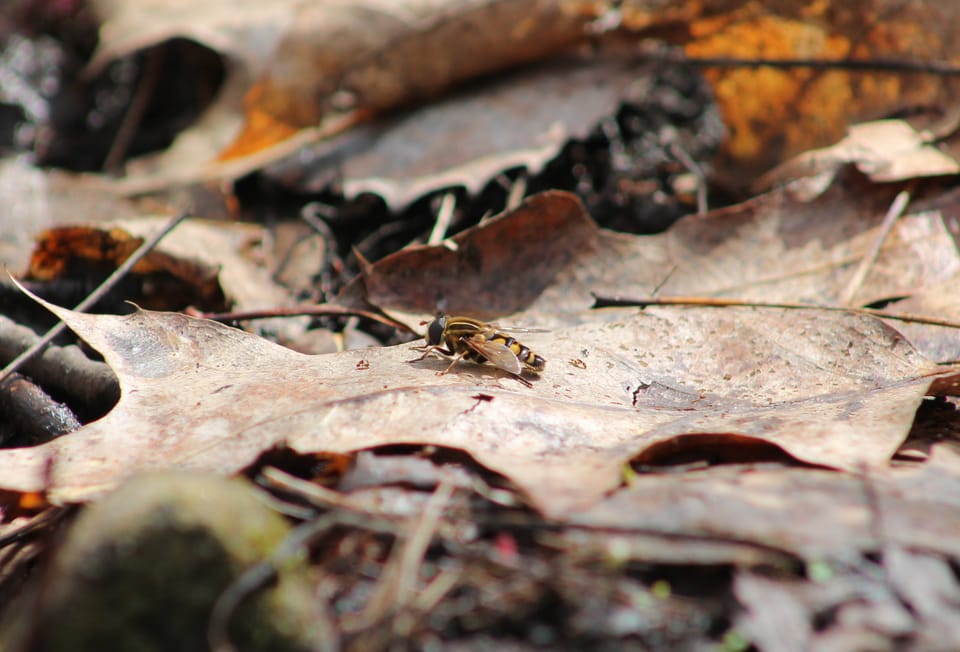
Written at the end of April
As the sky started to clear after a rainy, chilly April morning, I headed out to my local patch of woods (and brush piles, trails, and fields) that runs under and loops alongside the powerlines. Everything was still covered in droplets, the ground muddy, and I started out with my wool shirt buttoned up and my fingers cold, but in the short time it took me to get there—the sun as shockingly warm as it is every April, weak winter light having eroded memories of baking under real heat—I was already stuffing my outer shirt into my backpack, my fingers comfortable.
In the almost two weeks since I’d last been there (medical appointments and stress and distraction stealing away more time than I’d realized), the trout lilies, with their tan speckled leaves and delicate curving yellow flowers, had begun to bloom. Those at the very edges of the woods all sunny together, while those deeper into the trees were only just opening. The trilliums, trailing behind as they always do, had formed their perfect buds, a sliver of white petals peaking through green, not yet ready to open.
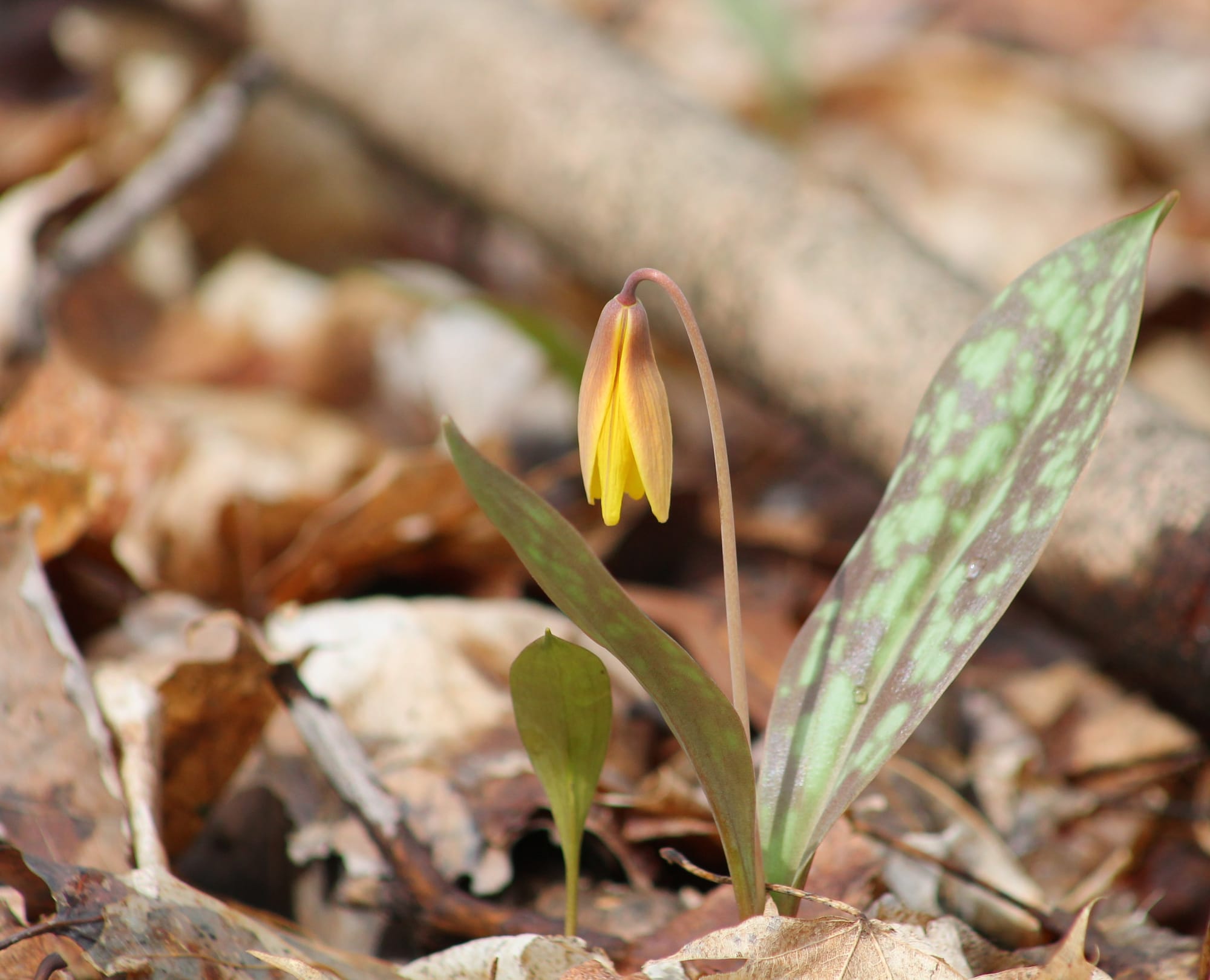
And everywhere, in overwhelming numbers, were white-throated sparrows.
I do not like to pick favourite birds, as it always makes me feel a little bit guilty about all the perfectly lovely birds I’m leaving out of my “favourite” bracket, but I have to admit that the white-throated sparrows might just be my favourite sparrows. They have a fascinating set of four “sexes” (or genders, or unnameable configuration that defies human definitions of pairings) made up of two different colour morphs, those with tan striped heads, and those with white, with both males and females in each colour. Their wings and backs are lovely warm variegated browns, the stripes on their heads crisp, and though it’s brighter in the white-striped morphs, both types have cheerful yellow lores, a bright spot above their eye. They are filled with feisty sparrow attitude, particularly in the spring, and as I walked along the paths today, I was serenaded by their beautiful song. They were singing perched in trees and on the ground, in the woods and the clearings, and from deep in the heaps of dead sumac left over from when Hydro Quebec last razed the stretch of growth under the powerlines to the ground.
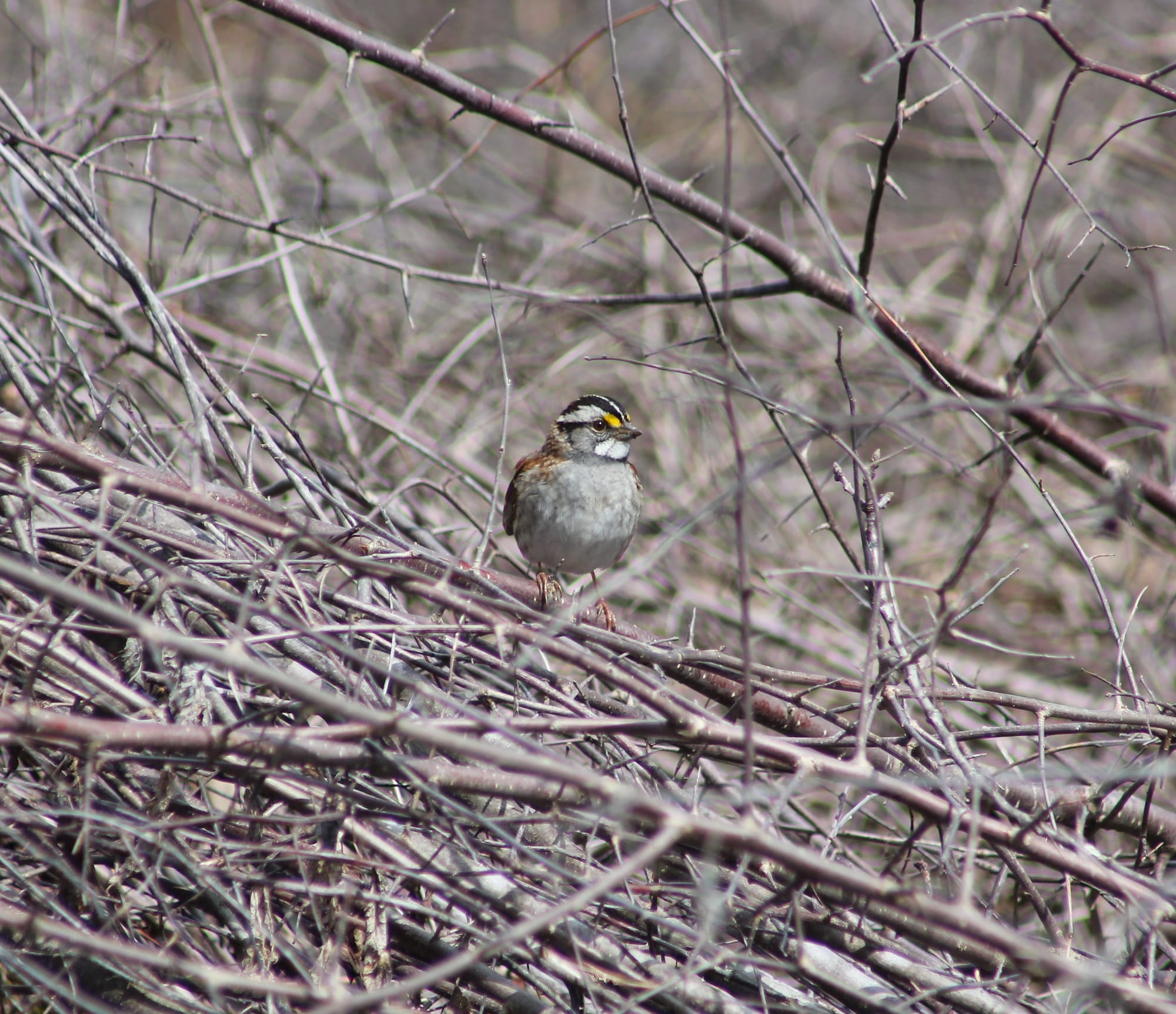
Often rendered into the mnemonic “oh sweet Canada, Canada, Canada,” the series of lilting notes has been so ever-present since these small bird arrived back from their overwintering grounds further south, that it’s actually been stuck in my head for days. I didn’t know birdsong could become an earworm yet I find myself tracing over the sounds in my mind, a melody I can almost taste on my tongue.
I thought I was hearing a lot of that song in my own backyard, and on whatever errands I’ve been running, briefly darting over to the nearest green spaces I could find and listening intently, but none of it has anything on this afternoon’s chorus, in this stretch of fragmentary habitat.
I was talking to a friend recently, while we meandered through a park looking for birds, about how strange people can be, when you’re out birding, a camera or binoculars around your neck. People talk to me far more often than they ever did before, and most are friendly: sometimes it’s other birders asking what I’ve seen, or sharing what birds they’ve come across. Often times it’s people who just make a friendly comment about how it’s good weather for photography, or ask if I’ve seen any birds in a far vaguer way than the birders (I can’t explain how, but it’s very different, and usually immediately recognizable). Most of those people, in both categories, tend to skew older than my mid-30’s. But then there’s a minority, but a consistent one, made up mostly of those around my age or younger, whose superficial friendliness seems to hold a bit of a mocking edge. Sure they ask if you’ve seen any interesting birds, but with just a touch of a smirk, very clearly not caring about the answer. Because it’s easiest and makes me the happiest to do, I respond to all inquiries with cheerfulness and treat all of them seriously: whether they want to know or not, they will hear about what birds I’ve seen.
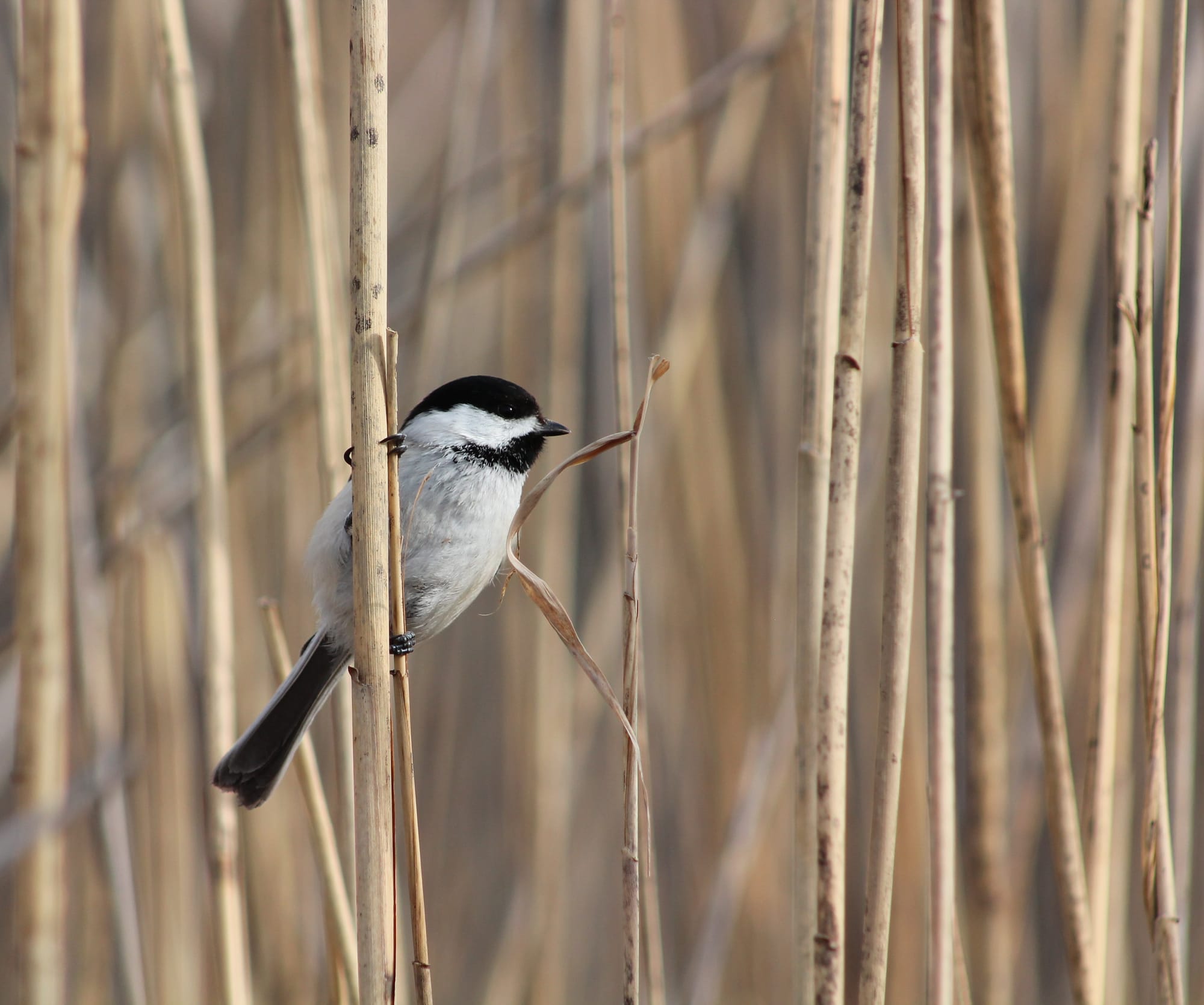
And my friend, with an immediacy that surprised me, had a theory on why that’s the case. She thinks younger people, when confronted with someone their own age or just a few years older doing an activity they associate with elderly people, are filled with discomfort, reminded of the unwelcome passage of time and their own mortality. Birding comes for us all. And yet simultaneously, my friend continued, there’s a discomfort in witnessing adults doing something without a clear purpose. Those 30 year olds we’d just passed with their dogs and sharp smiles would only be out here to walk their dogs, or to go on a run, something practical and necessary. Picking up on where she was going, I agreed that birding, on the other hand, is almost childlike in a way. You just go on a walk, and you look and listen, observe and delight in those observations. There are frequent pauses, you hare off in strange directions after a sound, you crouch low to peer through reeds and you tilt your head way back to watch small beings hopping around the very tops of trees, swaying against the sky. Any “purpose” is ephemeral and intangible, because it’s about the experience and your relationship to the environment around you.
I think my friend is onto something.
This afternoon, I spent more time winding through the forest paths than I usually do and less time in the cleared spaces and by the big pond–though I did pass several seasonal ponds, trees and dead branches rising out of the dark water, pausing to listen to the soft sound of maple flowers dropping into otherwise still water, ripples ringing outwards. It was a soundscape worth exploring, besides the irritating sound of a too-near leaf blower (all that’s left near my house truly are fragments, fit in around the edges of suburban developments and farm fields). I kept hearing the rising trills that make up part of the ruby-crowned kinglets song and the more even trills of the golden-crowned kinglets call, tiny, exuberantly active birds of the forest, as newly arrived as the white-throated sparrows. The downy woodpeckers would break in occasionally with their harsher calls, and I tried to follow the singing of a Carolina wren, a long term resident whom I’ve glimpsed a couple of times before as they dove into a brush pile, but could not lay my eyes on them this time.
And as I walked, listening carefully, I kept inhaling deeply, the scent of warming earth after rain on one of the first warm spring days reminding me giddily of how happy I am, despite everything, to be alive and here, among the trout lilies and trilliums and sparrows.
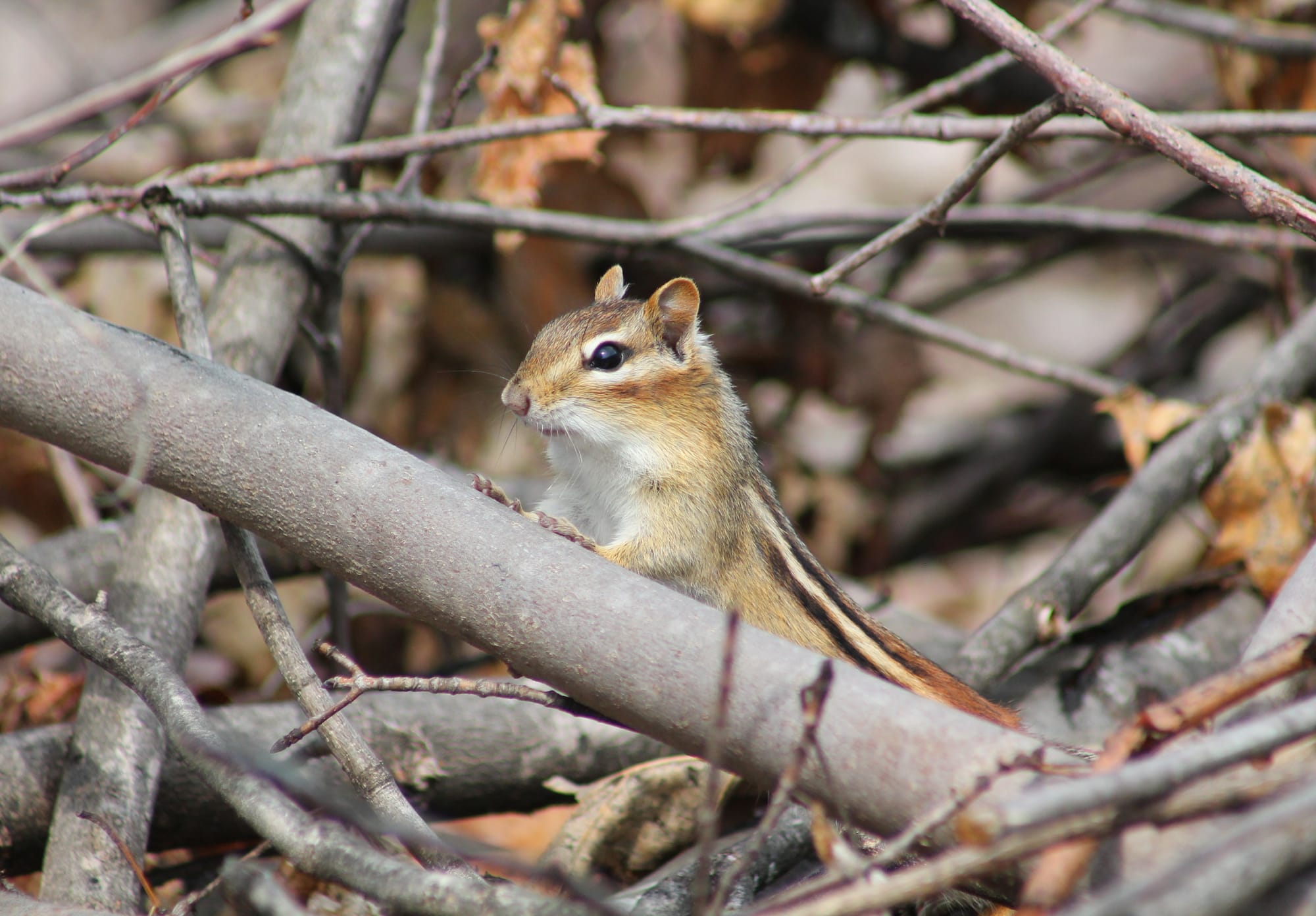
The need for a bathroom and a migraine curling ever tighter around my skull finally sent me heading back homewards, though I’m never very good at a steady return. I get distracted by a half-heard song and have to backtrack just a little, I see a plant I’d like to photograph, and as I’m on the final stretch of path before breaking back out into a world of pavement and cars, I see a butterfly, and have to follow it back up the path just a little bit too. It’s not the first butterfly I’ve seen this year (that honor goes to an anonymous one glimpsed briefly on a short hike a week ago), but this is the first butterfly I can actually see clearly, and photograph, and look them up when I get home.
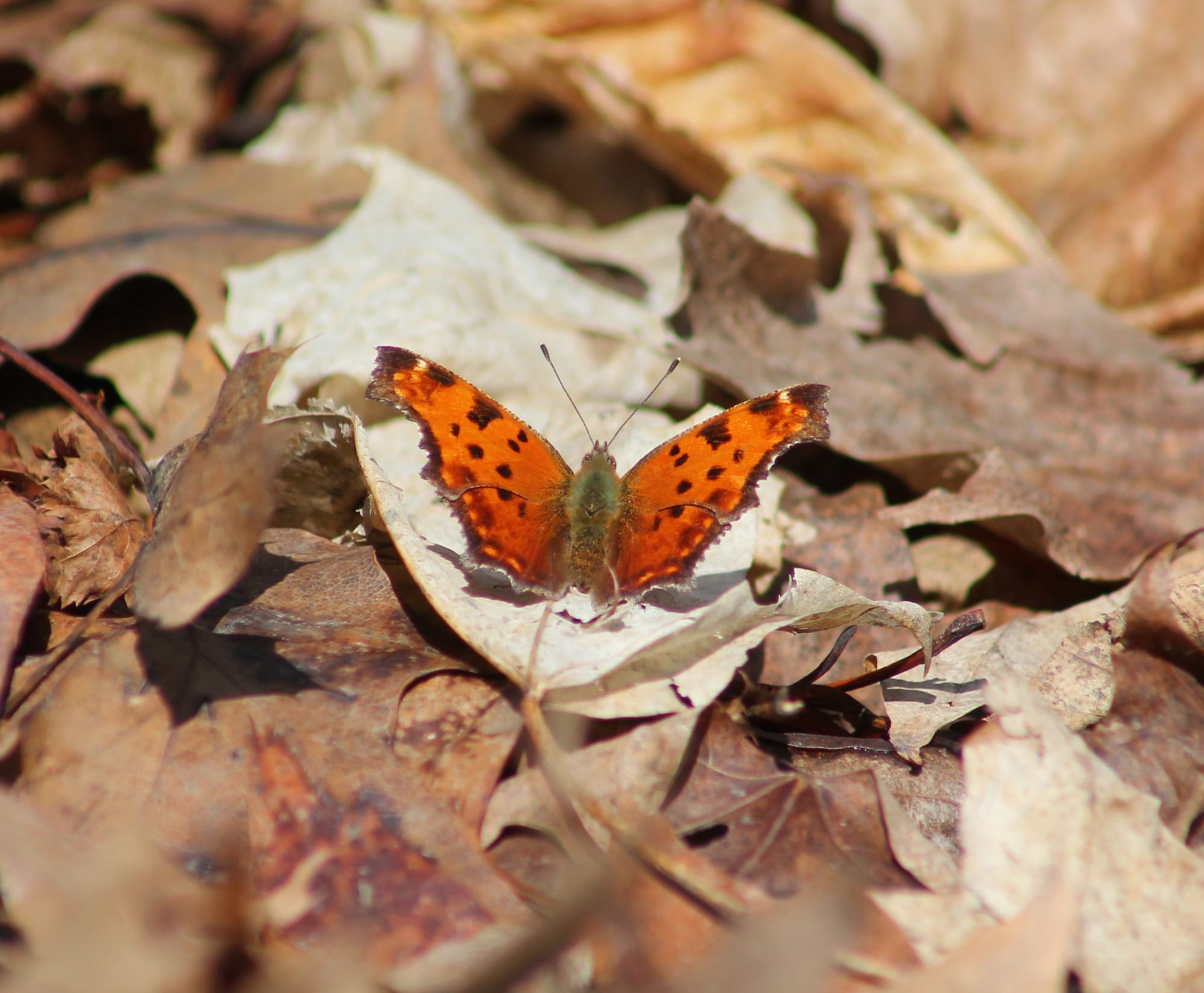
My day before this walk was not good, and my day after this walk was not good, but for that shining time in the rain splattered habitat with my camera, I was happy. Revelling in the purposeful purposelessness of just going outside, and seeing what I can find.
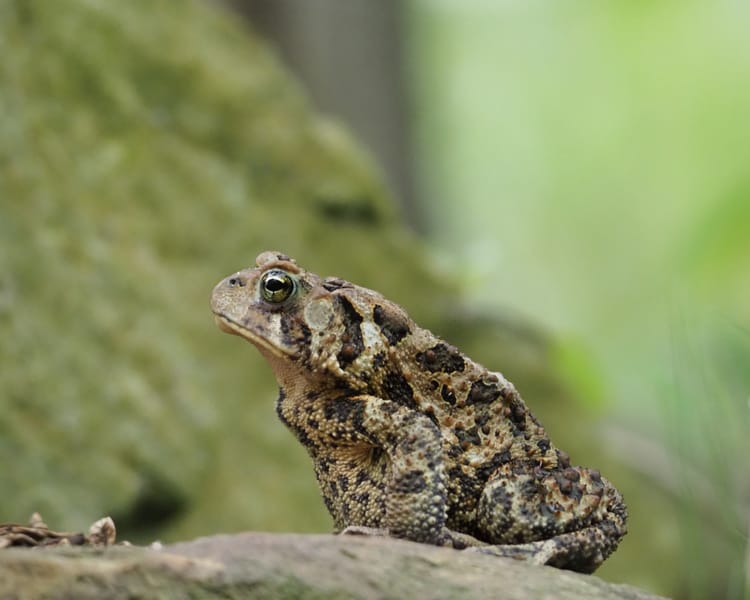
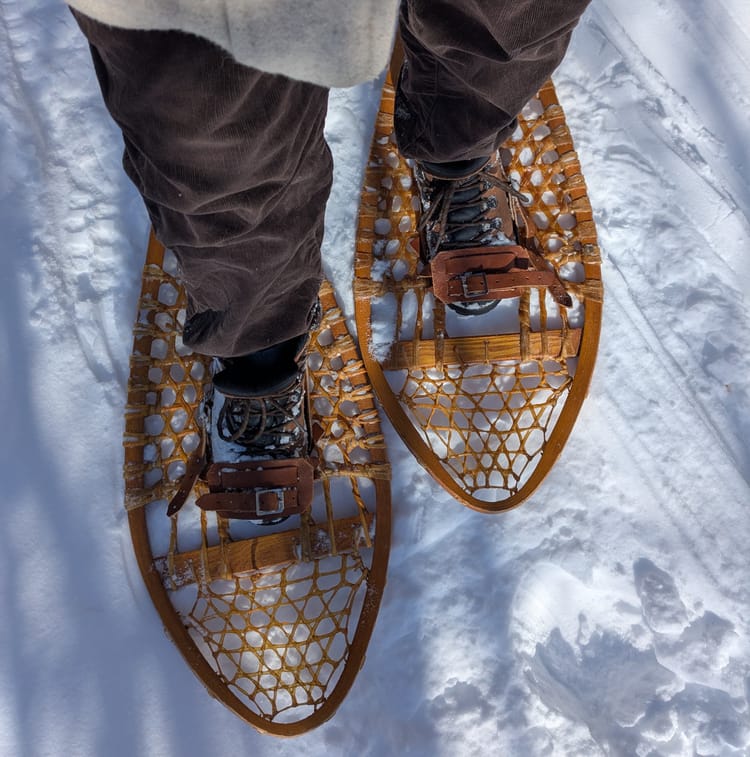
Member discussion